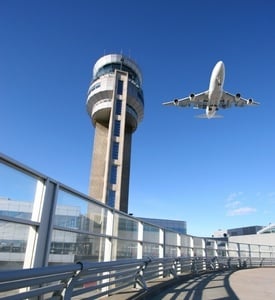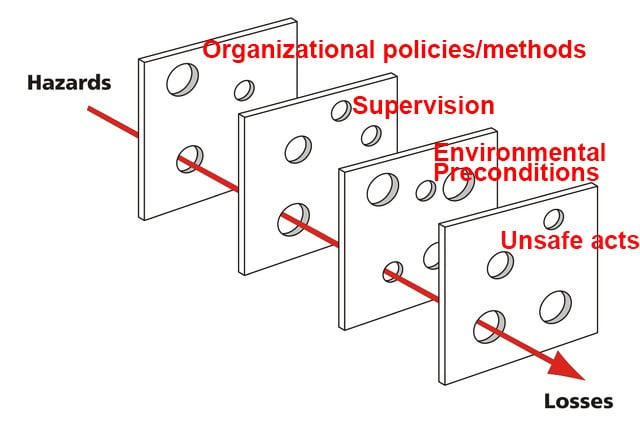What Are Main Activities of Proactive Risk Management?

Like aviation safety culture, proactive risk management is another part of aviation safety management systems (SMS) that a surprising number of people fail to truly understand. This creates missed opportunities and unfulfilled expectations that many aviation service providers can ill afford.
Setting the stage for proactive risk management in an aviation SMS is like painting a house. Safety teams
- plan and set safety goals;
- train employees on hazard identification;
- monitor employee SMS performance activities to determine training effectiveness;
- promote the SMS with proactive hazard identification-related messages; and
- continuously monitor, review, and repeat the process.
Related Proactive Risk Management Articles
- How to Practice Reactive, Proactive, and Predictive Risk Management in Aviation SMS
- 5 Indicators of Reactive or Proactive Safety Culture in Your Aviation SMS
- From Reactive to Proactive Risk Management in Aviation SMS
Proactive Safety Cultures Not Changed Quickly

Once you start painting the house, you are committed to the process.
Just like proactive risk management, you will prepare and begin implementing your plan to increase proactive risk management activities. Proper prior planning will prevent subsequent poor performance. Your plan should start with the end goal in mind. What are you trying to achieve? Do you know?
Changing the color of the house is not easily done, just like changing a safety promotion campaign in mid-stream is also challenging. Painting a house can be performed much more quickly than switching an organization's risk management attitude from a reactive mindset to a proactive mindset.
Just like painting a house, once you lay the groundwork for improving your organization's proactive risk management activity levels, the color will remain the same until major work is performed to "change the color." Sure, you can make minor changes, just like our house analogy. For example, with a house, you can easily modify the color of the trim, just as you can modify operational areas for which to focus organizational proactive risk management activities.
And just like a house, if you neglect to maintain the SMS's proactive strategies, your proactive safety culture will slowly decay until you are back to practicing only reactive risk management activities.
Proactively managing risk involves specific types of tasks, attitudes, and behaviors.
A proactive level of risk management does not replace or supersede other forms of risk management, such as reactive or predictive risk management. It is not an “elevated” risk management level.
It’s simply risk management activities that develop in more mature programs because they have:
- Well established SMS implementation;
- Regular safety training on hazards, threats, and risks;
- Enough historical SMS data to compile compelling safety data; and
- Safety commitment at every level of the company.
Looking at the whole organization, proactive risk management is:
- Identifying and making decisions in response to precursors to risk;
- Evaluating and strengthening risk controls before they are involved in a safety issue;
- Front line employees’ identifying root causes and threats as they emerge in the environment; and
- Giving the safety program an adequate budget to take full advantage of safety training and suitable aviation risk management software and tools.
Related Proactive Risk Management Articles
- What Is Proactive Risk Management in Aviation SMS?
- 7 Great Incentives for Proactive Risk Management in Aviation SMS
- From Reactive to Proactive Hazard Identification in Aviation SMS
Here are 4 activities that are at the center of proactive risk management in aviation SMS programs.
1 – Monitor Precursors to Risk
Before you can manage risk, you need to know what risk is. Basically, the risk is the point in a safety situation where safety control is lost. This is an important point to remember when considering risk management.
You also need to know what a precursor is. A precursor is:
- A situation that has the ingredients for a dangerous situation (risk);
- Underlying behaviors and attitudes that lead directly to safety issues;
- Actions that strongly correlate to increased risk exposure; and
- Bureaucratic inadequacies that lead to risky situations.
Proactive risk management, by definition, would imply addressing potential safety issues before the problems actually arise and the hazard manifests itself. At its most effective level, this involves evaluating the behaviors, attitudes, actions, and environmental conditions that lead directly to risk. Addressing precursors to risk involves:
- Monitoring leading indicators, which are metrics used to analyze levels of threat;
- Understanding exacerbating factors, such as hazards; and
- Root cause analysis.
Having a solid handle on precursors involves understanding how root causes, hazards, and threats interact in your safety program. This is one extremely important activity in proactively managing risk.
2 – Strengthen Risk Controls Ahead of Time
Proactively managing risk controls means using precursor data to make appropriate changes ahead of time. For example, in an organization that receives a sudden spike in employee turnover at the beginning of the SMS implementation, a couple of risk controls they could implement quickly are:
- Formal SMS induction training to reduce resistance to the SMS;
- End of training course competency testing; and
- Ensure that all roles have checklists.
Such risk controls anticipate the aspect of employee turnover that increases risk: unfamiliarity with the SMS and workflow at the new organization.
The ability to strengthen risk controls is one of the primary motivations for monitoring precursors to risk. Anticipating weaknesses in risk controls and fixing them before the related hazards manifest themselves allows the aviation operator to avoid or substantially mitigate most safety events that would otherwise be problematic. This is the proactive approach.
Related Proactive Risk Management Articles
- Checklist for Proactive Safety Culture in Aviation SMS Programs [With Free Resources]
- Proactive Risk Controls vs. Mitigative Risk Controls in Aviation SMS
- 3 Things Preventing Effective Proactive Risk Management in Aviation SMS
3 – Identify Threats as They Emerge

Proactive risk management isn’t just practiced by safety management teams. Risk management is an organization-wide effort against unsafe situations. It is absolutely critical that front-line employees understand this point.
Front-line employees need to understand that:
- Risk management is not just something that safety managers take care of;
- Identifying the early stages of threats is an essential part of proactively managing risk; and
- Taking appropriate action against emerging threats will almost always immediately deescalate the potential of the threat(s).
Emerging threats are hazards that, because of circumstances, suddenly increase the likelihood of becoming safety issues. If you are familiar with the Swiss Cheese model, emerging threats are “holes” in the cheese that are “lining up.”
Identifying emerging threats is essentially observing precursors in action. Front-line employees need to be drilled on precursors and know them as thoroughly as safety management. If employees don’t have the ability to identify emerging threats, then the program cannot possibly practice proactive risk management.
4 – Adequate Budget for Training and Tools
Budgets are obviously critical for every successful aviation SMS implementation. They indicate:
- Top management’s commitment to implementing and supporting the SMS;
- The ability for safety management teams to acquire adequate risk management tools; and
- The depth and scope of safety training available to employees.
Commitment, tools, and training all directly correlate to overall safety in the following ways:
- As training availability and quality increase, employees are better prepared to avoid and mitigate risk;
- Better risk management tools involve more complex safety data and better-informed decision-making; and
- Upper management commitment to safety indicates that safety will be held as a high priority in the company.
An aviation SMS is ultimately the responsibility of the accountable executive, not the safety manager. The accountable executive’s active role in proactive risk management is to provide the adequate budget required for thorough safety preparedness.
Related Proactive Risk Management Articles
- How to Practice Proactive Risk Management in Aviation Safety
- Proactive Risk Management: What Root Causes Say About Management
- 4 Charts for Proactive Risk Management
Final Thought: Difference Between Reactive, Predictive, and Proactive Risk Management
Lastly, let’s quickly look at the difference between the three types of risk management activities.
- Reactive risk management is the ability to respond quickly and adequately to current risks;
- Predictive risk management is the practice of looking at historical safety data trends to predict outcomes (good and bad) at any point in the future; and
- Proactive risk management is activities designed to expose and control the underlying causes that directly precede risk
Leading indicators are the foundation of the safety metrics involved in proactive risk management. If you haven’t already downloaded our free list of leading indicators, this list will be of invaluable benefit towards proactively managing risk. I highly recommend that you review this list.
Do you need tools to take your company from reactive to proactive risk management? SMS Pro has all the necessary tools, including a very nice Proactive Hazard Analysis Tool and Hazard Register.
Since 2007, SMS Pro has been working with aviation service providers around the world. We provide an SMS database and support personnel to allow operators to focus on their mission, while we focus on managing their SMS data.
Last updated in July 2025.








